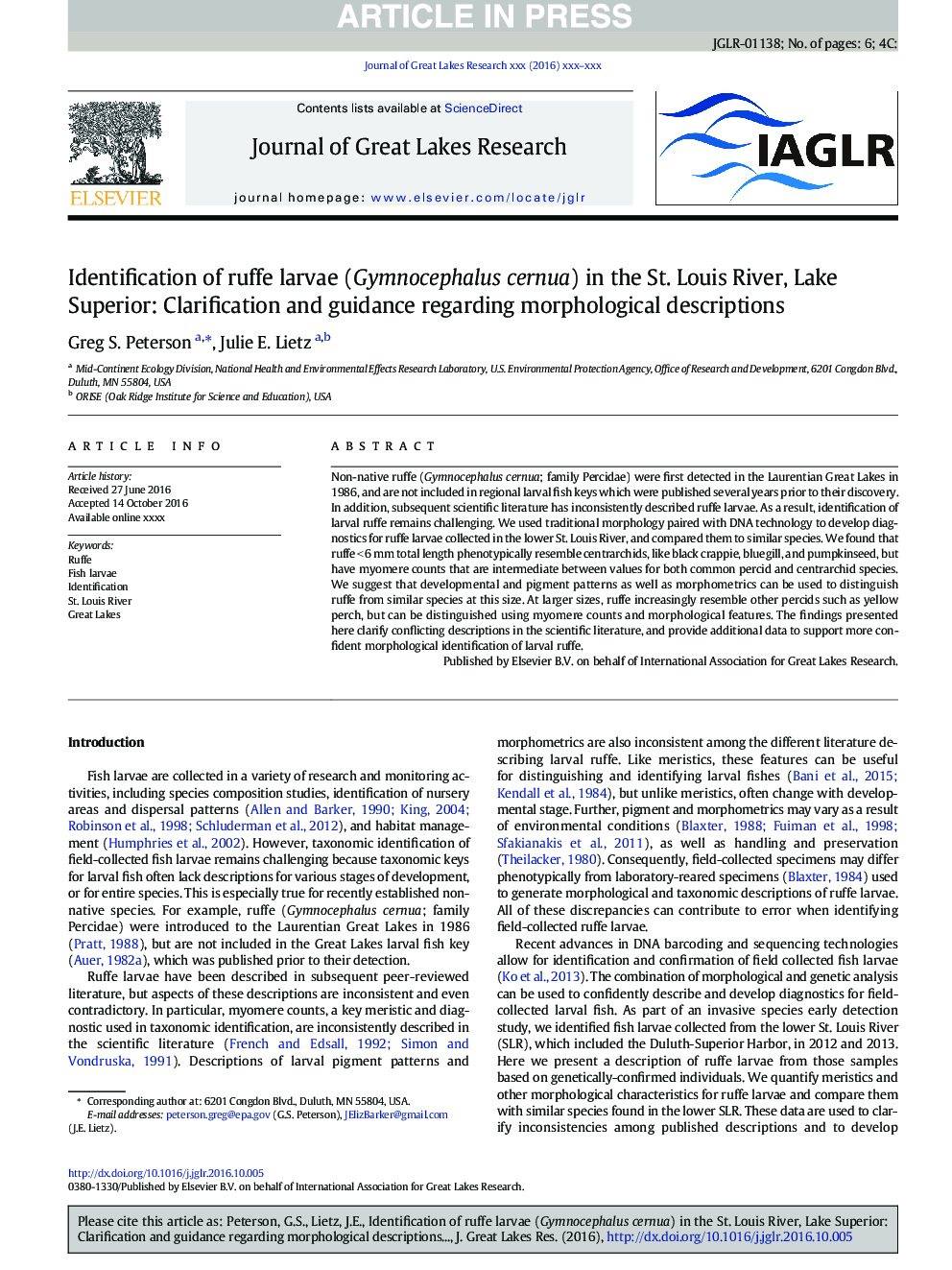| Article ID | Journal | Published Year | Pages | File Type |
|---|---|---|---|---|
| 5744785 | Journal of Great Lakes Research | 2017 | 6 Pages |
Abstract
Non-native ruffe (Gymnocephalus cernua; family Percidae) were first detected in the Laurentian Great Lakes in 1986, and are not included in regional larval fish keys which were published several years prior to their discovery. In addition, subsequent scientific literature has inconsistently described ruffe larvae. As a result, identification of larval ruffe remains challenging. We used traditional morphology paired with DNA technology to develop diagnostics for ruffe larvae collected in the lower St. Louis River, and compared them to similar species. We found that ruffe <Â 6Â mm total length phenotypically resemble centrarchids, like black crappie, bluegill, and pumpkinseed, but have myomere counts that are intermediate between values for both common percid and centrarchid species. We suggest that developmental and pigment patterns as well as morphometrics can be used to distinguish ruffe from similar species at this size. At larger sizes, ruffe increasingly resemble other percids such as yellow perch, but can be distinguished using myomere counts and morphological features. The findings presented here clarify conflicting descriptions in the scientific literature, and provide additional data to support more confident morphological identification of larval ruffe.
Related Topics
Physical Sciences and Engineering
Earth and Planetary Sciences
Earth and Planetary Sciences (General)
Authors
Greg S. Peterson, Julie E. Lietz,
